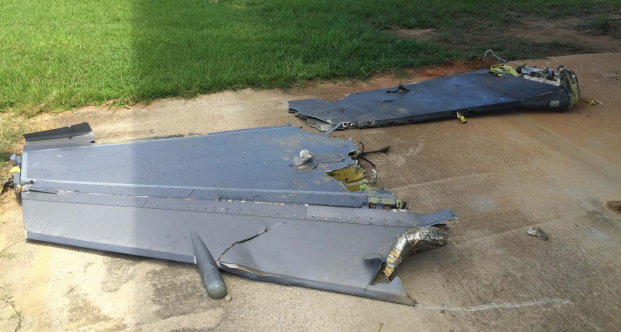
This photo shows the wingtips of two South Carolina Air National Guard F-16Cs after they collided during a June 2016 training mission near Louisville, Ga. Air Force photo.
Two South Carolina Air National Guard F-16C pilots failed to deconflict airspace after one of the pilots ran low on fuel, causing them to collide during training in Georgia in June 2016, according to an Air Force investigation released Friday.
The two pilots, assigned to the 157th Fighter Squadron at McEntire JNGB, S.C., were able to eject and suffered minor injuries in the mishap. Both aircraft were destroyed at a total loss of $60.8 million. The pilots were flying an instructor pilot upgrade training mission in the Bulldog Military Operating Area near Louisville, Ga.
One F-16C was flying in a wedge formation several miles behind the first after dusk, when the second pilot radioed a low fuel “bingo” call, which should have required the termination of tactical maneuvering and a return to base. While the first pilot initiated a turn, the second pilot was four miles behind and began to turn to follow the first pilot’s external lights. That pilot did not cross-check sensors to confirm the first F-16’s position and did not realize that the other pilot had finished a full turn and was flying toward him. The second pilot pointed directly at the first, trying to acquire a “visual mode radar lock.” The distance between the pilots decreased rapidly.
Within 2,500 feet separation, the pilot acquired radar lock but didn’t recognize the conflict. At the last moment, the pilots tried to left bank away from each other, but their high right wings collided. The pilots could not regain control and ejected.
The Air Combat Command Accident Investigation Board found that the crash was caused by the second pilot failing to “fulfill his primary responsibility to ensure flight path deconfliction.” Additional contributing factors were the first pilot not terminating tactical maneuvers following the “bingo” fuel call, and both the pilots overly relying on visual cues from external aircraft lighting.